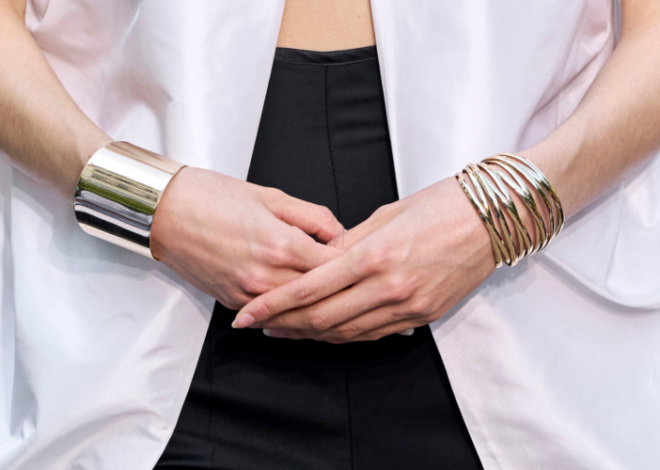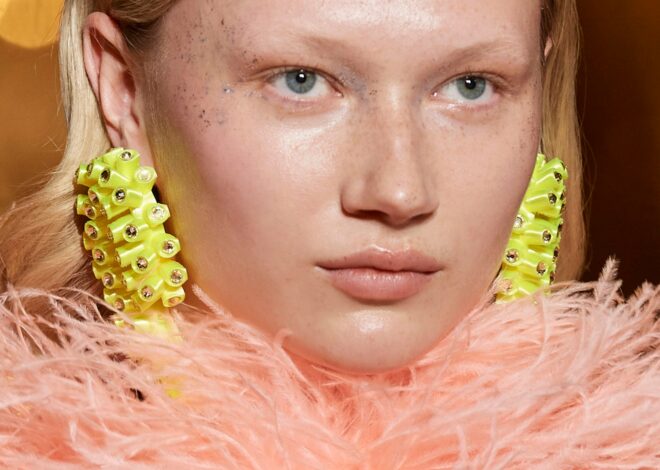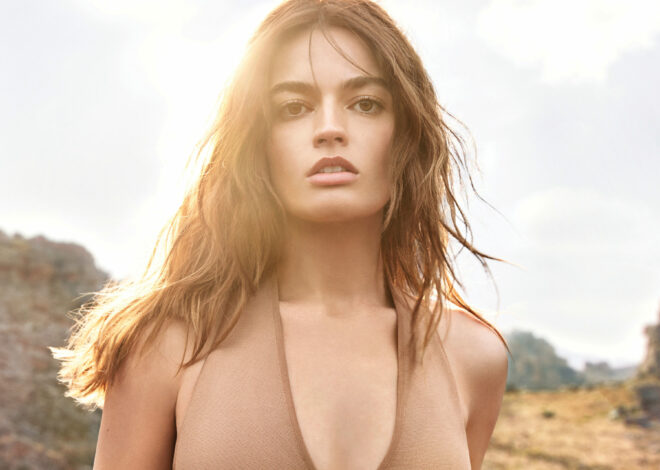White Dresses Won at the 2023 Oscars
- Being Outside Is Good For Your Body and Mind — Here’s Why - December 14, 2023
- The Chicest Bracelets for Women (All Under $100) - December 14, 2023
- Water Is Life — Here Are 11 Simple Ways to Drink More of It - December 14, 2023
This year, fashion mirrored a subtle changing of the tides.
At the 2023 Oscars, Michelle Yeoh made history as the first Asian woman to take home the Best Actress award and the first woman of colour to win since 2002. Wearing an ethereal white feathered Dior couture gown, the 60-year-old Everything Everywhere All at Once star had new beginnings on her mind. “This is a beacon of hope and possibilities,” she said in her teary acceptance speech, holding up her statuette. “This is proof that … dreams do come true. And ladies, don’t let anybody tell you you’re ever past your prime.” With that, a pearly sheen of possibility retroactively covered the evening. It’s no wonder, then, that the standout fashion trend was the colour of rebirth: white.
RELATED: 2023 Oscars After-Party Looks That Were More Exciting Than the Show Itself
On March 12, the Dolby theatre was brimming with soft, creamy colours. Zoë Saldana, Rooney Mara, Ana de Armas and Andrea Riseborough opted for pearly hues. Menswear risk-takers like Paul Mescal and Harry Shum Jr. broke out ivory-coloured jackets. Sofia Carson gave Old Hollywood glam in a frothy princess gown by Giambattista Valli paired with Chopard jewels. Mindy Kaling’s cut-out Vera Wang column was both simple and avant-garde, while Michelle Williams looked opulent in Chanel couture. From Tems’s sculptural (view-obstructing) Lever Couture ensemble to Emily Blunt’s minimalistic Valentino column, white dresses were everywhere at the 2023 Oscars. And that’s likely no coincidence.

White is a colour we’re seeing on dresses more and more each year at the Oscars, says Laurie Pressman, vice president of the Pantone Color Institute. “The clarity of white allows the star to shine through,” she tells FASHION. “The purity, simplicity and uncomplicated aspect of white is something we find very appealing at a time when life seems so complicated.”
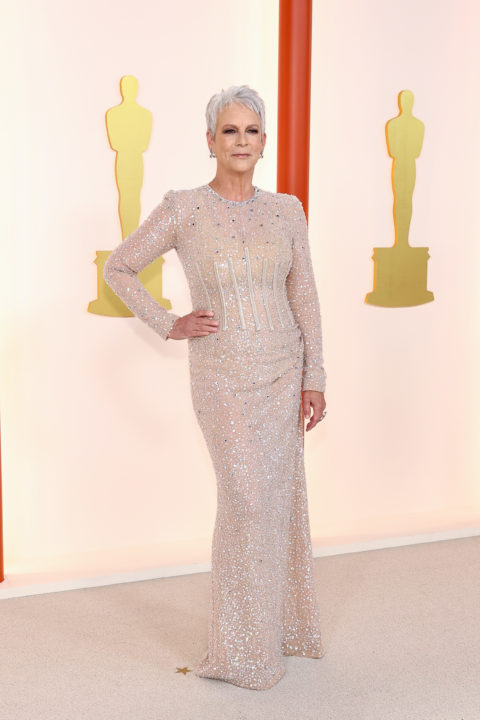
Last year’s awards show saw young talent breaking red-carpet norms (shoutout Zendaya!), and the 2023 event felt like a continuation of shattering Oscar traditions. Case in point: the literal red carpet. For the first time since 1961, the arrival rug was not red but “champagne” — a history-making change that was reportedly meant to evoke “calm and peacefulness” on the arrival rug. As it turns out, this soothing air reverberated in a sea of soft yet strong sartorial moments.

As seen on Michelle Yeoh, ivory wares proved to be this year’s trending choice among Oscar history-makers. Halle Berry, who became the first woman of colour to win Best Actress in 2002, wore a white Tamara Ralph gown adorned with shimmery rosettes and a leg slit. Ariana DeBose, who went viral in 2022 as the first Afro Latina and openly queer woman of colour to win an Academy Award for acting, donned a pristine custom Atelier Versace dress. Jamie Lee Curtis showed up in a pearlescent embellished Dolce & Gabbana number and went on to win Best Supporting Actress. But what are the implications of this trend?
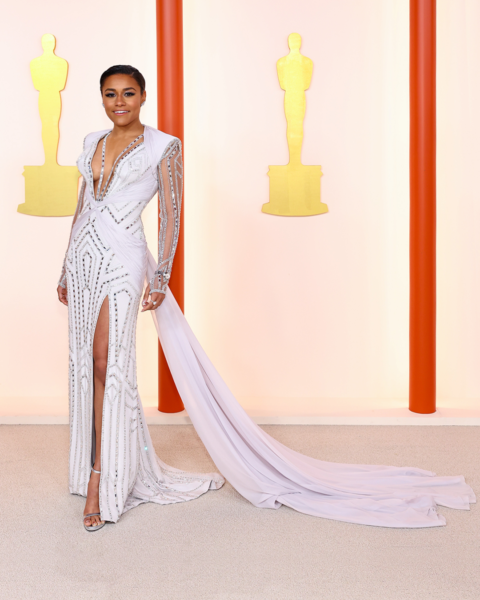
Simply put, white clothes have a fraught history. Yes, the hue has come to be associated with purity, bliss, and innocence. But at the same time, it’s long been the colour of privilege, embedded in the imagery of wealth and status (think: “ivory tower”). Traditionally, wearing the sterile shade comes with a lot of rules, from pervasive warnings about looking washed out to fashion’s perennial law banning white after Labour Day. The latter reportedly dates back to the 19th century, when the moneyed elite set an appropriate time and place to wear the colour in efforts to distinguish themselves from the nouveau riche. It’s not hard to see why, over the years, darker colour palettes have remained an attainable go-to, while white has become a rebellious statement. This is especially true at an event like the Academy Awards.

“Because black is an expected colour to see and many of the stars chose to wear it, white presents a clarifying contrast to the ever-present black,” says Pressman. And when we do see it, it tends to be full of symbolism. At the 2018 Oscars, FASHION covered the trend of white dresses as an emblem of fresh starts in the midst of the #MeToo era. Similarly, an ethos of new beginnings was ever-present at the 2023 Oscars.
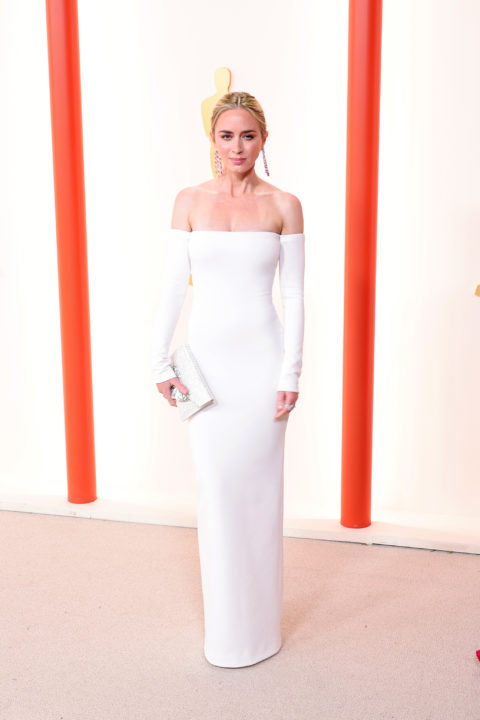
For starters, there were a lot of firsts. Along with Yeoh and Curtis, many longtime actors got their much-awaited dues, from Ke Huy Quan to Brendan Fraser. The track “Naatu Naatu” from RRR was named the Best Original Song, representing the first time an Indian production has won in the category. Not to mention, the evening’s victories were unmistakably dominated by Everything Everywhere All at Once — a story about an immigrant Asian family that positions a working class mom (played by Yeoh) as a multiverse superhero. BBC noted that, unlike last year, the night was free of salacious headlines, but “radical in its own quiet way.”
After winning her award, Michelle Yeoh said, “I just hope that I am not the last, [and] this is just the beginning.” Progress toward representation is infamously slow at the Oscars. But if the 2023 event proved anything, it’s that change is always possible. New beginnings are everywhere, just look at the straightforward simplicity of a white dress.
